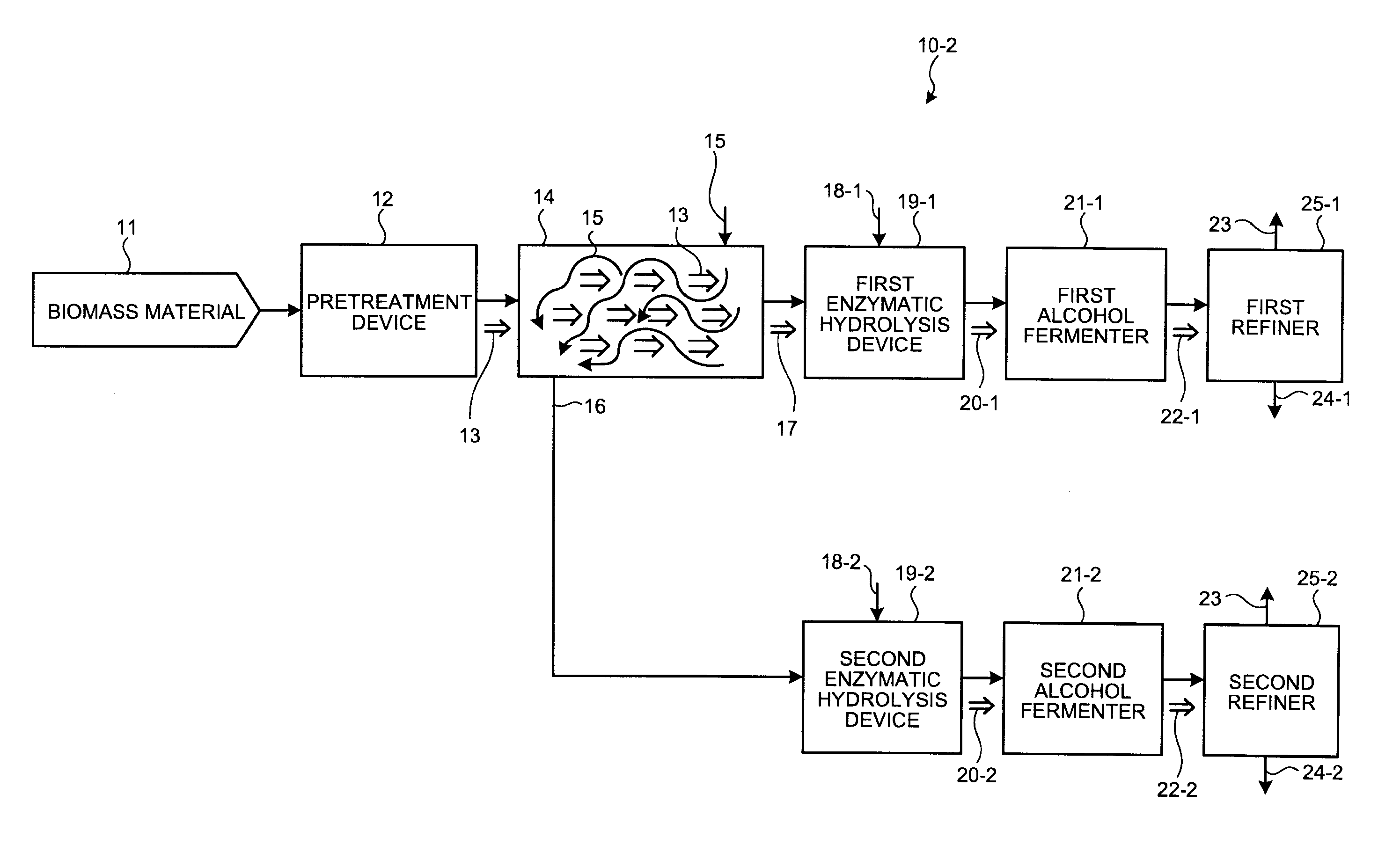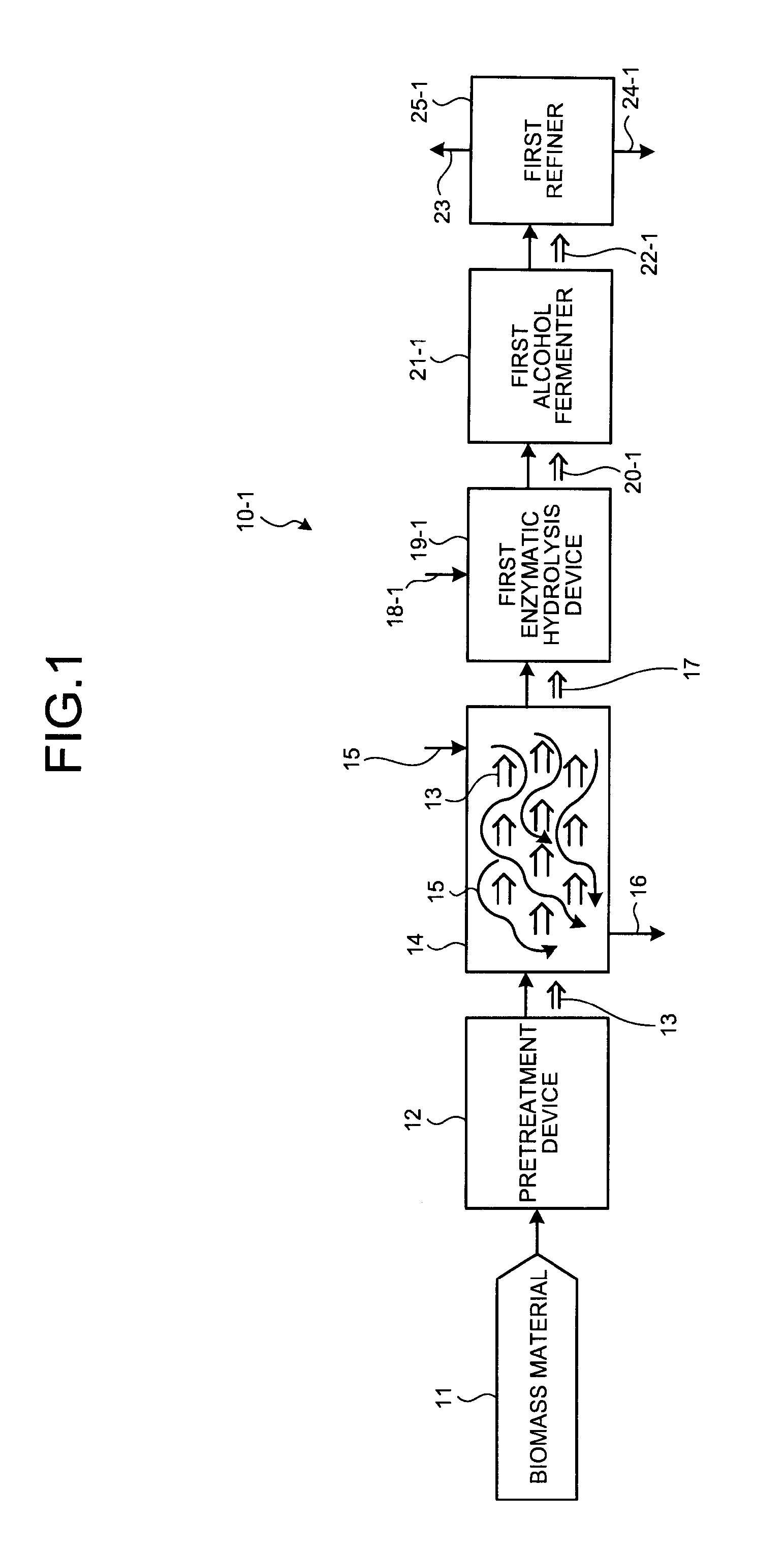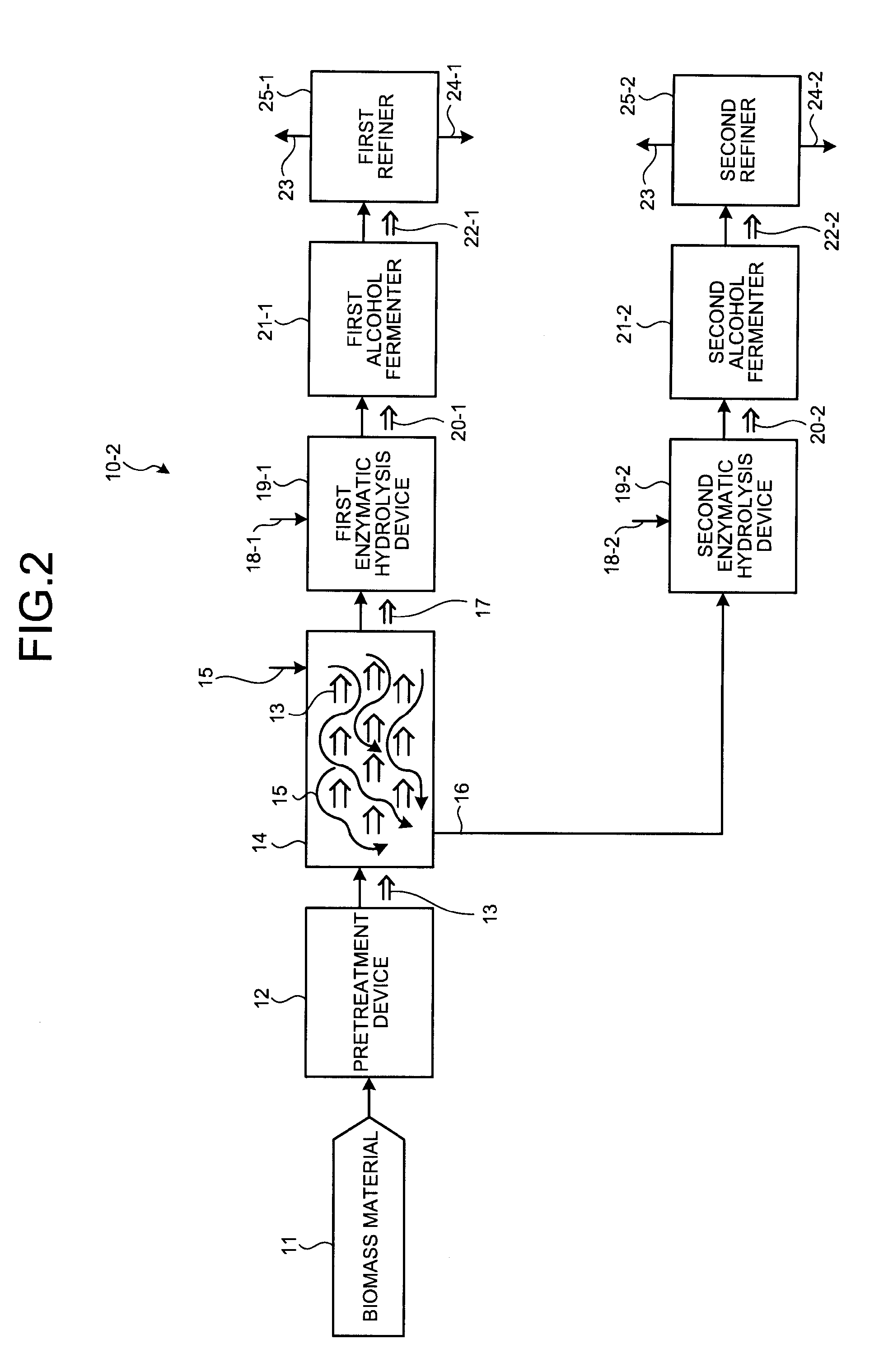Organic material production system using biomass material and method
- Summary
- Abstract
- Description
- Claims
- Application Information
AI Technical Summary
Benefits of technology
Problems solved by technology
Method used
Image
Examples
first embodiment
[0043]A system of producing an organic material, i.e., alcohol, with use of biomass material according to an embodiment of the present invention is described with reference to the drawings. FIG. 1 is a schematic of an organic material production system using biomass material according to the embodiment. As shown in FIG. 1, an alcohol production system 10-1 using biomass material according to the present embodiment includes: a pretreatment device 12 that, for example, pulverizes the biomass material 11; a hydrothermal decomposition apparatus 14 that hydrothermally decomposes pretreated biomass material (e.g., straw in the present embodiment), i.e., a pulverized biomass 13, by causing it to countercurrently contact the hot compressed water 15, elutes lignin components and hemicellulose components into the hot compressed water 15, and separates the lignin components and the hemicellulose components from a biomass solid residue; a first enzymatic hydrolysis device 19-1 that treats cellu...
second embodiment
[0057]With reference to the drawings, the following describes a system of producing an organic material, i.e., alcohol, with use of biomass material according to an embodiment of the present invention. FIG. 2 is a schematic of an organic material production system using biomass material according to the present embodiment. As shown in FIG. 2, an alcohol production system 10-2 using biomass material according to the present embodiment is constituted by the system 10-1 shown in FIG. 1 that includes a second enzymatic hydrolysis device 19-2. The second enzymatic hydrolysis device 19-2 treats hemicellulose components, eluted into the discharged hot water 16 discharged from the hydrothermal decomposition apparatus 14, with an enzyme to enzymatically hydrolyze it to a second sugar solution 20-2 containing pentose. Two enzymatic hydrolysis devices, two alcohol fermenters, and two refiners are provided (the first enzymatic hydrolysis device 19-1, the second enzymatic hydrolysis device 19-2,...
PUM
| Property | Measurement | Unit |
|---|---|---|
| Temperature | aaaaa | aaaaa |
| Temperature | aaaaa | aaaaa |
Abstract
Description
Claims
Application Information
 Login to View More
Login to View More - R&D
- Intellectual Property
- Life Sciences
- Materials
- Tech Scout
- Unparalleled Data Quality
- Higher Quality Content
- 60% Fewer Hallucinations
Browse by: Latest US Patents, China's latest patents, Technical Efficacy Thesaurus, Application Domain, Technology Topic, Popular Technical Reports.
© 2025 PatSnap. All rights reserved.Legal|Privacy policy|Modern Slavery Act Transparency Statement|Sitemap|About US| Contact US: help@patsnap.com



